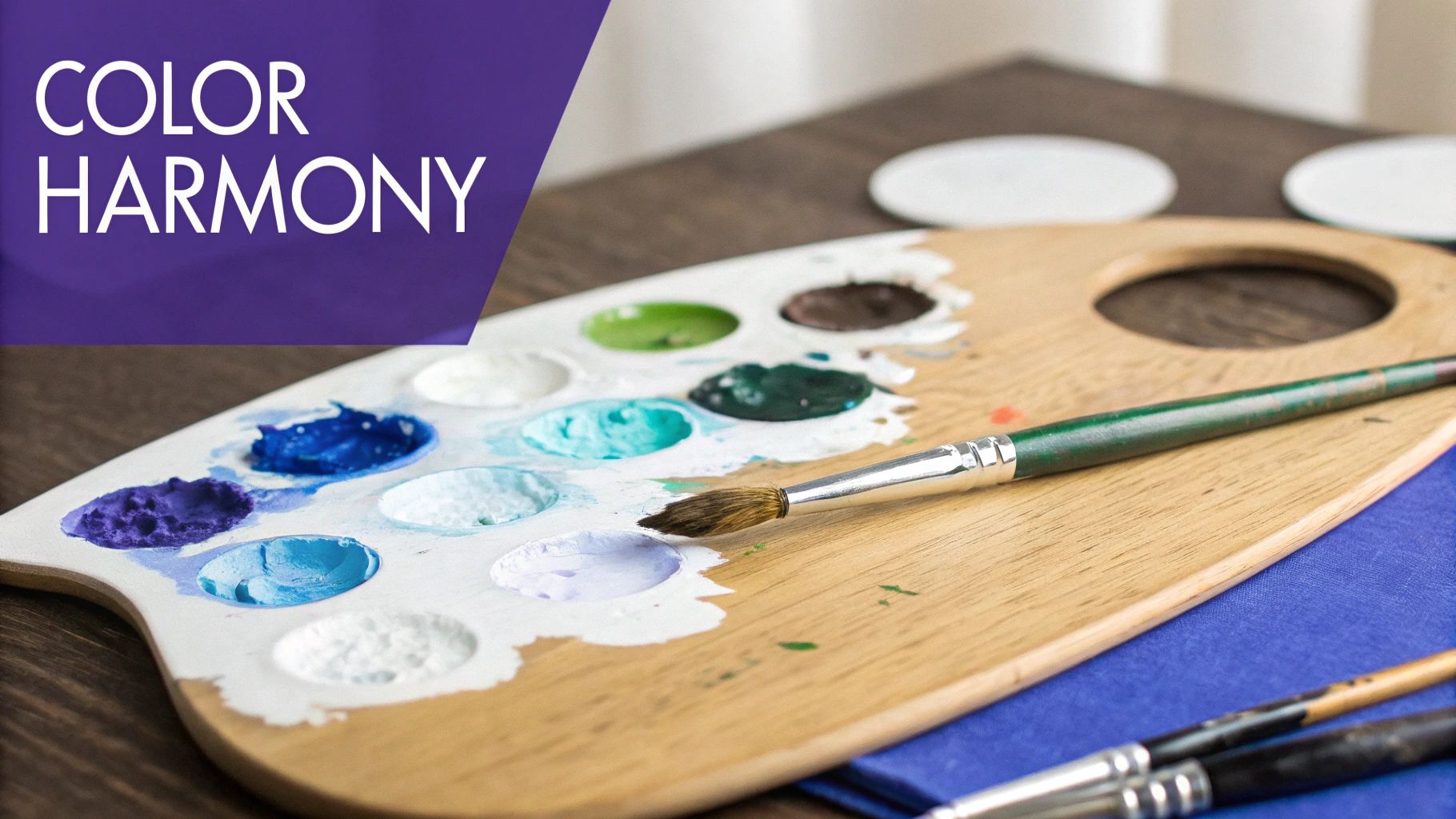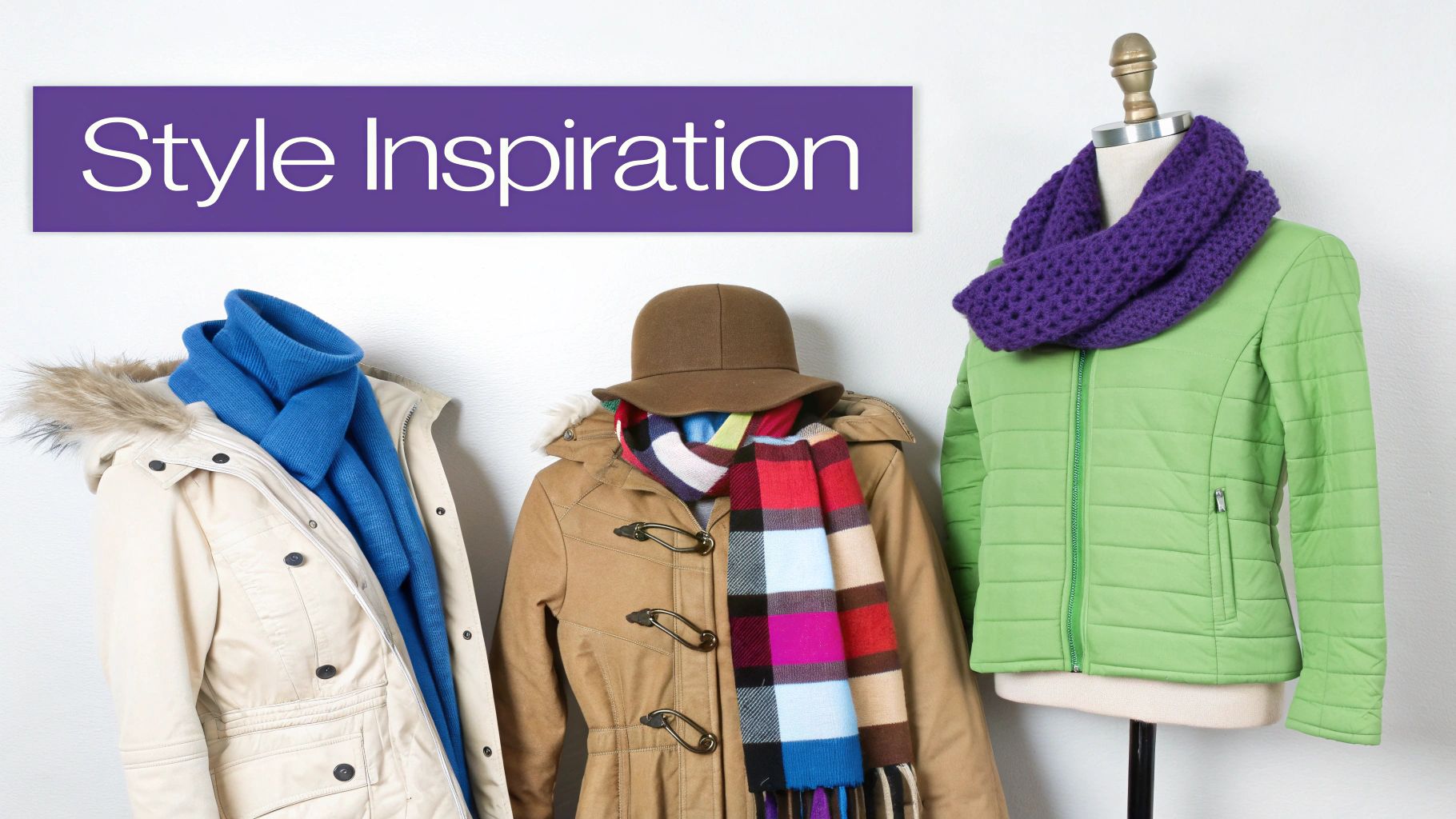
Winter Color Analysis: The Ultimate Guide to Finding Your True Colors
By Emma Johnson - 8/17/2025
The Origins and Evolution of Winter Color Analysis

The history of color analysis weaves together art and science, examining how personal features interact with color harmonies. Johannes Itten played a key role in developing this field through his 1961 book "The Art of Color." His work showed that people naturally choose colors that complement their personal features, setting the foundation for sorting individuals into seasonal color groups. Learn more about Itten's work and influence.
The concept of "winter" color analysis has grown from an artistic idea into a detailed system used by style professionals. Seasonal color analysis places people into four main groups - Spring, Summer, Autumn, and Winter. Building on Itten's early theories, experts have created specific methods to evaluate skin undertones, eye patterns, and hair colors to provide consistent results.
Scientific Principles Behind Winter Color Analysis
The science of winter color analysis relies on three key factors: contrast levels, color temperature, and saturation. People who fall into the winter category often show high contrast between their hair, skin, and eyes. Their best colors are cool and intense, bringing out natural vibrancy in their appearance.
The psychology of color also matters in this analysis. Winter palette colors - deep blues, pure blacks, and crisp whites - communicate strength and capability. This shows how color analysis goes beyond just looks to affect both perception and confidence.
Modern Application and Practical Insights
Today's color analysis experts use tools like color draping and digital analysis to give clients precise guidance. These methods help people build wardrobes with their most flattering colors, boosting both confidence and personal style. Understanding the history and development of color analysis provides deeper insight into making the most of your natural coloring.
Color analysis has evolved from artistic theory to practical styling tool by combining art, psychology and science. This proven approach helps people harness the power of color to enhance their natural features and express themselves authentically.
Identifying Winter Color Characteristics
The Winter season in color analysis features striking clarity. This appears through high contrast, cool undertones, and pure, bright colors. These traits show up differently across various ethnic backgrounds and age groups. Let's explore the key signs of Winter coloring to help distinguish true Winters from similar seasons.
Contrast: A Hallmark of the Winter Palette
Winter types show distinct contrast between their features. This often means dark hair with light skin, or a strong difference between eye whites and iris color. But contrast isn't just about hair and skin - someone with deep brown eyes and bright clear skin can also display Winter's high contrast. The key is how all features work together to create contrast.
Cool Undertones: The Foundation of Winter Coloring
Cool undertones form a core part of Winter coloring. Winter skin undertones range from neutral-cool to very cool, with bluish or rosy hints. This coolness shows in natural hair colors too - think ash browns, deep blacks, or cool blondes. Even seemingly warm hair like auburn usually has a cool, ashy base in Winters. You might be interested in: How to master your perfect palette.
Eye Color and Patterns: Reflecting the Winter Brilliance
Winter eyes are bright and clear, spanning from icy blues and grays to deep browns and vivid greens. The eye whites tend to be bright white, adding to the overall contrast. Eye patterns often show clear, distinct marks that add to Winter's intensity. These eye traits help confirm Winter coloring.
Hair Color: A Spectrum of Cool Shades
Winter hair spans more colors than many realize. While jet black and ash brown are common, cool blonde and silvery gray also fit the Winter palette. The key is cool undertones and clarity across all Winter hair colors. This shows that dark hair isn't the only sign of Winter coloring.
Professional Evaluation: Deciphering the Subtleties
Color analysts use special methods to assess Winter traits. They check how colors look in different lighting and use color drapes to see how shades affect someone's complexion. This expert analysis can spot subtle signs that might be missed during self-assessment, especially with complex coloring.
Applying Insights to Self-Analysis: A Practical Approach
Understanding how contrast, cool undertones, eye patterns, and hair color work together helps with accurate Winter color analysis. While professional analysis gives the most precise results, knowing these basic traits helps you start evaluating your own coloring more effectively. This knowledge leads to better color choices that match your natural features.
Mastering Winter Color Self-Assessment

You don't need a professional color analyst to determine if you're a Winter color type. With some simple techniques and careful observation, you can assess your coloring at home. Here are proven methods to help you identify your Winter season status.
Digital Color Matching: Tools at Your Fingertips
Modern technology offers easy ways to analyze your coloring. Using color analysis apps and software, you can match your features against Winter color palettes and check for cool undertones and high contrast levels. For quick analysis, try tools like AI Color Analysis that provide instant feedback.
Fabric Draping: A Hands-On Approach
Testing fabric colors against your skin remains one of the most reliable methods. Start with classic Winter shades - pure white, true red, royal blue, and black. Place them near your face in natural light. Winter colors should make your complexion look bright and clear, not dull or washed out.
Recognizing Color Effects
Pay attention to how different colors affect your overall appearance. Winter types typically show strong contrast between their hair, skin and eyes. Notice if colors enhance this natural contrast or make everything look flat. This helps avoid mistaking your season.
Troubleshooting Common Missteps
It's easy to misidentify as a Winter without proper guidance. If colors seem too warm or drain your complexion, try cooler shades with more contrast instead. Remember that Winter types can have many different skin tones and features - it's the way colors interact with your natural coloring that matters.
Confirming Your Winter Season
After testing these methods, verify your findings. Review color analysis resources and guides to double-check your results. For deeper insights into determining your undertone, read our article on Understanding Your Skin Undertone.
Finding your true Winter colors takes practice and patience. But mastering these self-assessment techniques will help you identify the shades that truly complement your natural coloring. The result? A wardrobe of colors that make you look and feel your best.
Understanding Winter Subtypes: Cool, Clear, and Deep

The Winter color season has three distinct variations that help provide more personalized color recommendations. These Winter subtypes - Cool Winter, Clear Winter, and Deep Winter - each showcase Winter's characteristic brilliance in their own unique way. Understanding your specific subtype allows for more precise and flattering color choices.
Cool Winter: Icy Elegance
Cool Winter features the most distinctly cool tones in the Winter family. The palette centers on icy blues, crisp pinks, and frosty lavenders - colors with prominent blue undertones that complement Cool Winter features. While a true red might overwhelm a Cool Winter complexion, a blue-based raspberry red creates perfect harmony. Silver jewelry and accessories work especially well with this subtype's cool coloring.
Clear Winter: Vivid Brilliance
Clear Winter stands out through its need for pure, bright colors with high contrast. This subtype looks stunning in jewel tones like emerald green, electric fuchsia, and vivid sapphire blue. Clear Winters often have notable contrast between their features naturally, which these bright colors enhance beautifully. Black and white combinations particularly flatter this subtype.
Deep Winter: Rich and Dramatic
Deep Winter requires the most saturated and darkest shades in the Winter palette. These individuals shine in forest green, burgundy, and black - colors that match their typically dark hair and eyes. While lighter Winter colors might wash out a Deep Winter, rich deep shades create a natural, sophisticated look that enhances their features.
Identifying Your Winter Subtype: Practical Exercises
Finding your Winter subtype takes some careful testing. Here are some practical ways to determine which subtype matches you best:
- Jewelry Test: Cool Winters typically look best in silver, while Clear and Deep Winters can wear both silver and gold effectively
- Makeup Guide: Cool Winters shine in cool pinks and berries, Clear Winters in bright fuchsias and true reds, Deep Winters in deep wine reds
- Color Intensity Check: Compare different shades of the same color against your skin - notice whether light, medium or dark intensities look most natural
By observing how different colors interact with your features, you can build a personalized palette that brings out your best. This knowledge helps you choose colors with confidence and enhance your natural coloring effectively.
Creating Your Signature Winter Wardrobe
A well-planned winter wardrobe that aligns with your personal color analysis can help you look and feel your best. The Winter color palette focuses on cool, clear shades with high contrast. Understanding these colors helps you make smart clothing choices that complement your natural features.
Investing in Quality Pieces
Build your wardrobe around key investment pieces that mix and match effortlessly. Essential items include timeless coats in navy or charcoal, quality wool sweaters in rich jewel tones, and well-fitted black trousers. These pieces offer both practicality and polish while working with your Winter coloring.
Signature Combinations That Shine
The real magic happens when you combine pieces effectively to highlight your best features. Try pairing a crisp white blouse with a cobalt blue blazer for a polished office look. For another striking option, layer a black turtleneck under a red winter coat - this high-contrast combination works beautifully for both casual and formal settings.
Balancing Trends with Timelessness
While classic pieces form your foundation, selective trend pieces keep your style current. Look for cool-toned items that fit your Winter palette. Metallic accents, especially in silver tones, add modern flair while staying true to Winter's crisp aesthetic. Just be sure to balance trendy items with classics.
Building Versatility for Every Occasion
Your Winter wardrobe should work for all aspects of your life - from work to weekends. Smart accessories play a key role here - a bold scarf or statement earrings can transform an outfit from day to evening wear.
A cohesive wardrobe means every piece works together seamlessly. The most successful Winter-typed wardrobes achieve this through careful curation. To learn more about how your features influence your best colors, read our guide on eye and hair color importance in personal color analysis.
By understanding and applying your Winter color analysis, you can build a signature wardrobe that makes you look and feel confident while expressing your personal style.
Perfecting Winter Beauty Strategies

Understanding your Winter color analysis opens up endless beauty possibilities. When you know your Winter color profile, you can make smart choices about makeup, hair color, and skincare that bring out your best features. Let's explore how to build a beauty routine that makes the most of your Winter coloring.
Makeup for the Winter Season
Winter complexions shine with makeup that works with their cool undertones and natural contrast. The key is selecting shades that create a fresh, polished appearance. Clear reds, cool pinks, and rich berry tones on lips and cheeks look stunning against Winter's cool skin tone.
For eyes, stick to cool-toned shadows like silver, gray, and deep blue to enhance Winter's natural radiance. A well-defined eyeliner in black, navy, or plum makes eyes pop. Don't be afraid of color - Winter coloring can handle bold jewel tones beautifully.
Hair Color for Winter Types
The secret to flattering Winter hair color is maintaining those cool undertones. Think ashy browns, pure black, and icy blondes that complement Winter's natural intensity. Even warmer shades like auburn can work if the base stays cool or neutral to match the Winter palette.
Healthy, shiny hair is essential for Winter types. That glossy finish reflects light in a way that enhances Winter's natural vibrancy and adds to an overall polished look.
Skincare Essentials for Winters
For Winter types, skincare should focus on achieving a clear, luminous complexion. Since Winter beauty relies on high contrast, maintaining radiant skin is key. Choose products that even out skin tone and target specific concerns like redness or dark spots.
Protection from sun damage is crucial for Winter types. Sun exposure can dull the complexion and reduce the contrast that makes Winter coloring special. That's why daily sunscreen is an absolute must in any Winter beauty routine.
Building Your Winter Beauty Routine
The real power of Winter color analysis comes from making it your own. Try different shades within your Winter palette until you find what makes you feel amazing. Maybe a bold berry lip becomes your signature, or perhaps smoky eyes with silver highlights feel more authentic.
Creating your ideal Winter beauty approach takes time and experimentation. Feel free to play with colors and techniques until you discover what brings out your natural beauty best.
Want to discover your exact Winter color profile? AI Color Analysis makes it simple to find your perfect season and get personalized recommendations for makeup, clothing and more. Learn which colors flatter you most using our advanced technology. Begin your color journey today!
Take your style to the next level with a professional analysis
You already know the theory. Now discover exactly which colors and styles enhance your personal image.
Loading...
Complete PDF report in less than 5 minutes
Your color season and personalized palette
Specific makeup and clothing recommendations
Based on professional color analysis
One-time investment:
One-time payment, no subscriptions. Instant access.